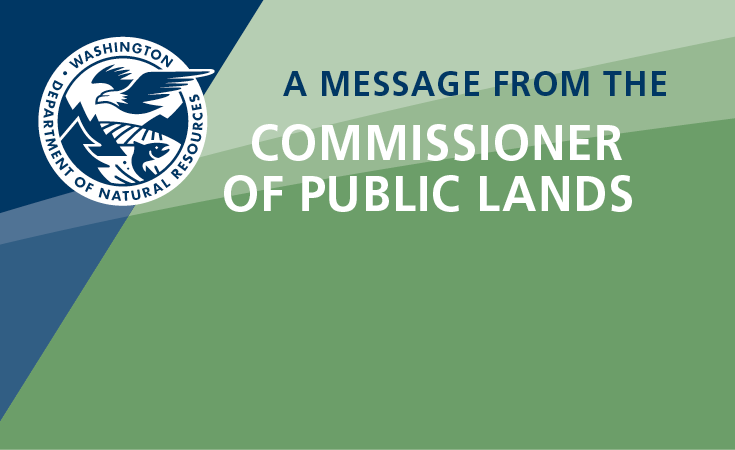Forest Practices Application

Pursuant to Chapter 76.09 RCW and Title 222 WAC, The Department of Natural Resources (DNR) regulates forest practices on private and state forest land.
A “forest practice” is defined by the State Forest Practices Rules as “any activity conducted on or directly pertaining to forest land and relating to growing, harvesting, or processing timber.”
Topics covered on this page:
What activities require an FPA/N?
Activities include but are not limited to:
-
Harvesting timber
-
Salvaging logs, stumps, or snags
-
Constructing forest roads
-
Installing or replacing culverts/bridges on forest roads or conducting any work in or over typed water.
-
Large woody debris placement/removal in any typed water associated with a forest practice activity.
-
Constructing or expanding gravel pits on forestland for forestry use.
How much does an FPA/N cost?
The fee depends on several factors, check the fee schedule below or contact the local Region Office. Here is a link to the FPA/N Fee Schedule.
What do I need to include with my application?
This depends on what your activity includes and what types of resources are within or adjacent to your proposal. At a minimum, you will need a completed FPA/N form and a FP activity map.
The FPA/N instructions detail how to produce a complete application. The landowner, timber owner, and operator must provide an original signature on the FPA/N form. We do not currently accept copies or digital signatures.
Here you will find the application forms and instructions for conducting forest practices activities in Washington State and information for using the Forest Practices Application Review System (FPARS), including the FPARS reviewer profile form.
Here you can create and print an activity map. Review the FPA/N instructions for more information on the activity map standards and requirements.
If you are submitting a GIS map, there are certain layers that are required. These layers can be accessed at FP GIS Data.
Can I apply for an FPA/N online?
Not yet but that ability will be available in spring 2025. Find out more about the project here.
How long will it take to review my application?
DNR has 30 calendar days to approve, conditionally approve, or disapprove most FPA/Ns. Multi-Year, Long-Term, and WDFW concurrence hydraulic project FPA/Ns will have a longer review period. A notice of receipt with the review timeline will be provided once the application has been received by office staff. Frequently Asked Questions about FPA/N processing timelines can be found here.
Where do I submit my application?
FPA/Ns should be submitted to the local DNR Region Office that covers the area of the activity. See the Regional Contact list.
Is the decision on my application dependent on anything besides the information in my application?
Circumstances requiring special resource protection, such as potentially unstable slopes, threatened or endangered species, archaeological or historic sites, water quality protection and special prescriptions for sensitive areas within a watershed analysis unit may affect the application decision.
What is the appeal process for the application?
Appeals must be received by the Pollution Control Hearings Board, The Attorney General’s Office, and the Department of Natural Resources Region Office within 30 days of the approval or disapproval of the application. For more information on appeals, visit the Pollution Control Hearings Board web page at: https://eluho.wa.gov/. You can also view a short presentation on appeal options here: Forest Practices Decision Appeals.
What if I need help?
Forest Practices Illustrated is a reference manual that contains information about how to follow the Forest Practices rules with illustrated examples. A copy can be found here.
If you are a Small Forest Landowner, the DNR Regulation Assistance Program can provide understanding on the forest practices rules and the overall application process.
For more information on additional programs, please visit the Small Forest Landowner Office (SFLO) website.
If you need a Qualified Expert to help with identification and protection of potentially unstable slopes, here is the current list.
Your local DNR region office staff are available to answer questions about the Forest Practices Application/Notification (FPA/N) or about the Forest Practices Rules. Find your region office here.
Supplemental Forms
Watershed Analysis Units (WAU)
Contact your local DNR region office to verify whether your land is within a completed Watershed Analysis Unit and if prescriptions apply. Prescriptions are alternatives to certain forest practices rules. If landowners do not want to use the prescriptions, they may use current rules or propose an alternate plan.
State Environmental Policy Act (SEPA)
The State Environmental Policy Act (SEPA) is the process for public review of your proposed operation. It requires projects be evaluated for their impacts to the environment. An environmental checklist is required for converting land use from forestry to non-forest uses, and for operations that may have significant impacts on the environment.
Desired Future Condition (DFC)
A DFC worksheet is required required when selecting certain riparian management zone harvest strategies on Type F or S waters, or for constructing roads or salvaging within a Type F or S riparian management zone.


